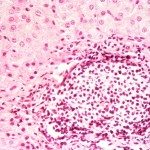Link to Pubmed [PMID] – 23375738
J. Clin. Virol. 2013 May;57(1):5-12
Two classes of antiviral drugs are licensed in Europe for treatment and prophylaxis of influenza; the M2 ion-channel blockers amantadine and rimantadine acting against type A influenza viruses only and the neuraminidase enzyme inhibitors zanamivir and oseltamivir acting against type A and type B influenza viruses. This guidance document was developed for but not limited to the European Union (EU) and other European Economic Area (EEA) countries on how and when to test for influenza virus antiviral drug susceptibility. It is aimed at clinical and influenza surveillance laboratories carrying out antiviral drug susceptibility testing on influenza viruses from patients suspected of harbouring viruses with reduced susceptibility or for the monitoring of the emergence of such among circulating viruses, respectively. Therefore, the guidance should not be read as a directive or an algorithm for treatment. Monitoring for emergence of influenza viruses with reduced drug susceptibility in hospitalized cases is crucial for decision making on possible changes to antiviral treatment. Therefore, it is important to test for antiviral susceptibility in certain patient groups, such as patients treated with influenza antiviral drugs. It is also important to determine the frequency of viruses with natural (not related to drug use) reduced susceptibility among community and hospitalized cases, as this knowledge is essential for making empirical antiviral treatment decisions. Furthermore, testing of specimens from community influenza patients is needed to determine the frequency of viruses with reduced susceptibility and good viral fitness that are readily transmissible, as they may become dominant among circulating viruses. Phenotypic neuraminidase enzyme inhibition assays are recommended to determine the level of inhibition of the neuraminidase enzyme by antiviral drugs as a measure of drug susceptibility of the virus. Genotypic assays are recommended to identify amino acid substitutions in the neuraminidase and M2 ion-channel proteins that have been associated with reduced antiviral susceptibility previously. By 2012 all circulating seasonal influenza A(H1N1)pdm09 and A(H3N2) viruses were naturally resistant to the M2 ion-channel blockers, so priority should be given to testing for neuraminidase inhibitor susceptibility.

